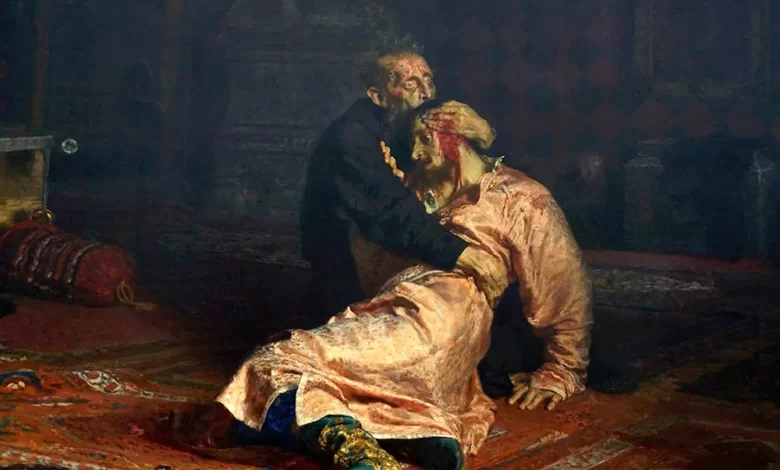Tsar Ivan the Terrible

Agencies – Sudan Events
This is unique painting by the realist Russian artist Ilya Repin, painted between 1883 and 1885, and it is one of the most famous and controversial paintings in the history of Russia.
The painting is a depiction of the tragic moment when Tsar Ivan the Terrible killed his son Ivan Ivanovich in a fit of rage. The painting is a powerful and disturbing depiction of violence and despair.
On November 16, 1581, Ivan the Terrible and his son Ivan were arguing in the Kremlin when he struck his son with his cane, killing him instantly. The cause of the argument is unknown, but it is believed to have been related to Ivan Ivanovitch’s marriage to a woman who did not belong to the nobility.
It was said that the Tsar caused his pregnant daughter-in-law to miscarry when he beat her because she was wearing inappropriate clothes.
Upon learning of this, his eldest son, also named Ivan, had a heated argument with his father. As a result, Ivan hit his son on the head with his pointed stick, resulting in his death.
Repin’s painting is a detailed and realistic depiction of the scene. It shows Ivan the Terrible cradling his dead son in his arms, his facial expressions full of sadness and remorse. The dying Ivan Ivanovich is shown holding his father’s hand with a peaceful and forgiving face, and his touch on his father’s arm seems consoling, as if he was lovingly forgiving him for what he had done.
The details surrounding Ivan’s eyes are incredible, it is absolutely amazing how Repin depicted Ivan’s sadness, madness and horror.
It is as if the artist were present when it happened!
The painting has been interpreted in different ways. Some saw it as a condemnation of violence, while others saw it as an expression of the tragedy of fate. Some saw it as a picture of a madman, while others saw it as a picture of a man who loved his son deeply and regretted killing him.
The painting was controversial from the moment it was first shown. Repin was in a dangerous position due to the political overtones, as the Tsar was portrayed as a deranged murderer.
The painting was banned from public display for several years, and was not allowed to be displayed again until 1905.



